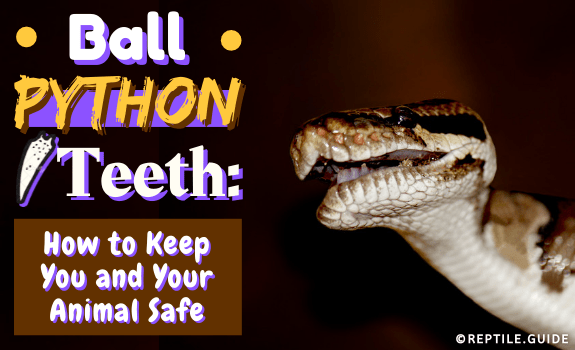Have you ever wondered about your ball python’s teeth or even his oral hygiene?
The good news is that you DON’T need to start brushing your pet snake’s teeth.
Still, there’s a lot to learn about ball python teeth, bite safety, and oral health. Keep reading to find out more!
In This Article
In Short
- Ball pythons can bite, but they usually don’t.
- Ball pythons may have over 30 teeth at any time.
- Ball pythons have teeth, but they DON’T have fangs.
- Their teeth are quite small, but they’re sharp and curved inward.
- Like all snakes, ball pythons frequently lose and re-grow their teeth.
Do Ball Pythons Have Teeth?
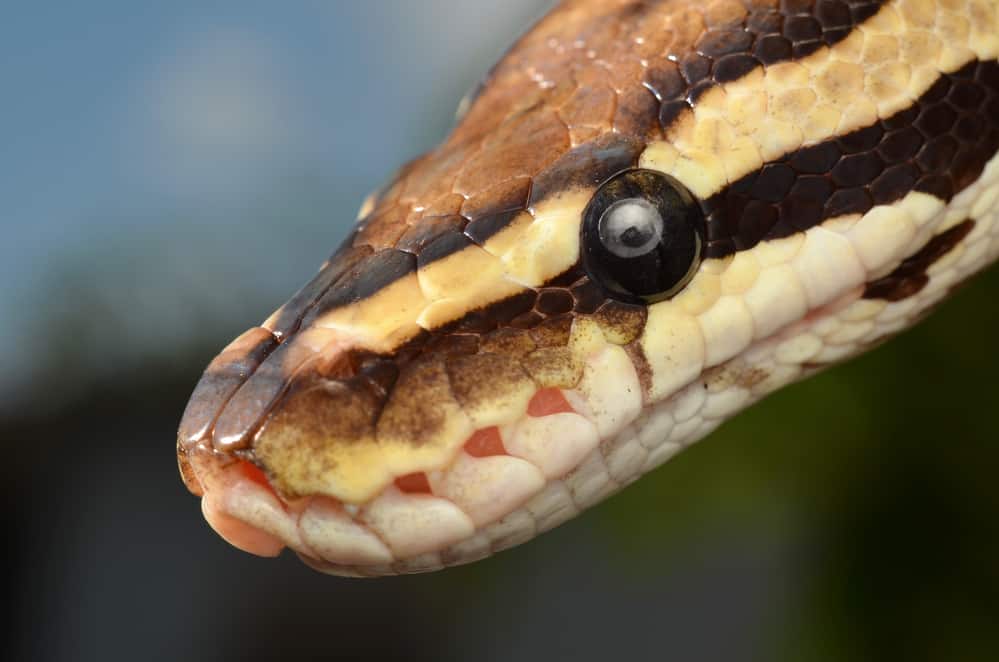
Yes, ball pythons most definitely do have teeth.
And they have lots of them.
In fact, all snakes have teeth that they’re constantly losing and re-growing.
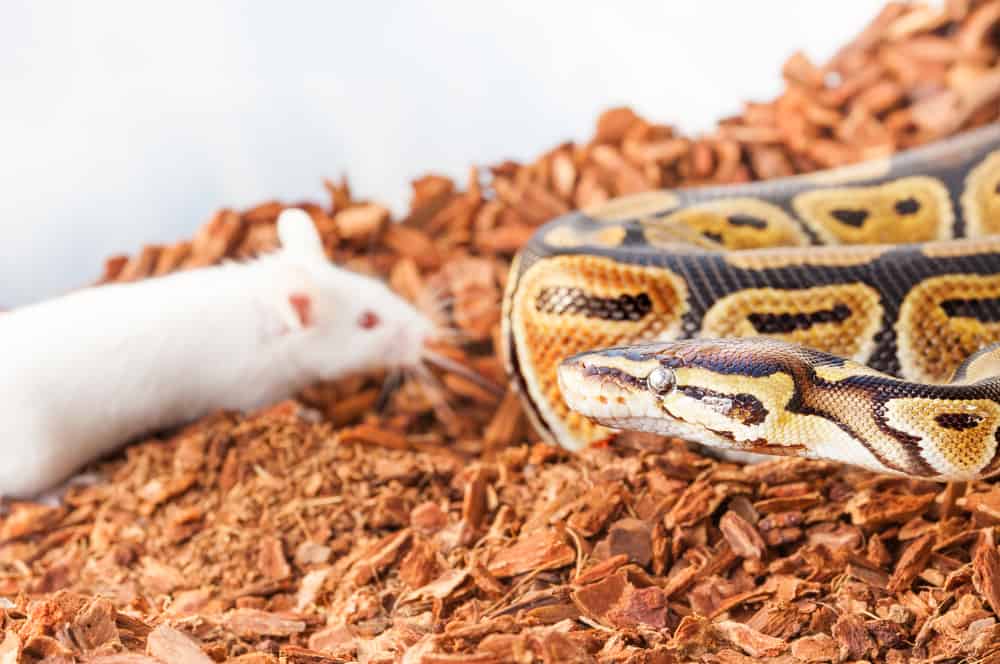
They frequently become snagged, tugged, and pulled out. A snake can’t catch its prey without teeth, so they grow them back!
Ball pythons do NOT, however, have fangs. Fangs are hollow, modified teeth that deliver venom like a needle.
Thankfully, ball pythons are NOT venomous. Non-venomous snakes don’t need (or have) fangs.
What Do Ball Python Teeth Look Like?
Ball pythons have small, sharp teeth that are curved inward.
They DON’T look like shark teeth, dog teeth, or alligator teeth.
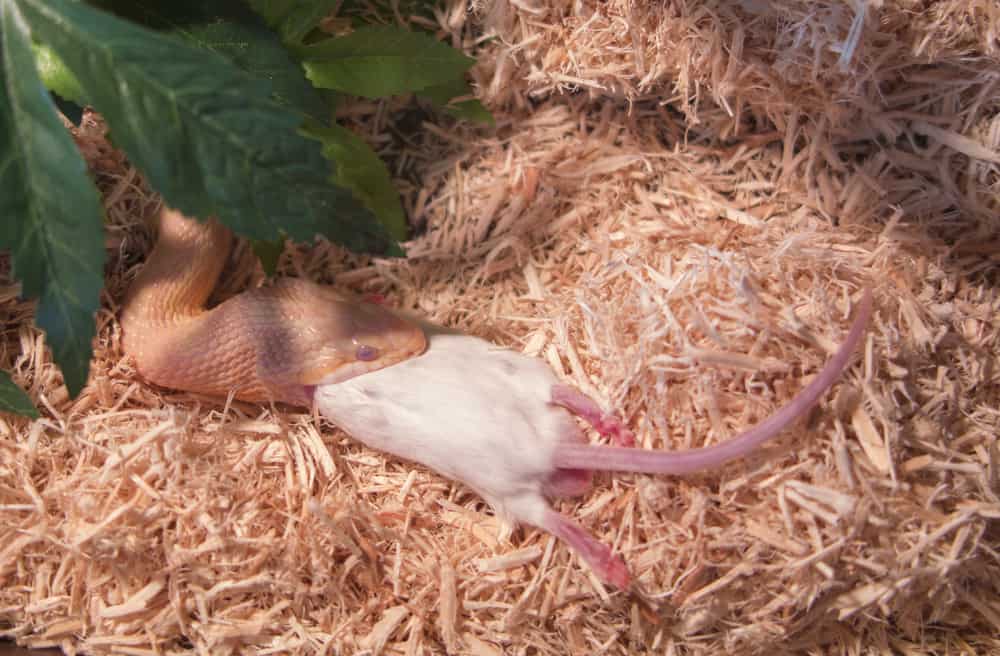
They’re much more thin and curved. They’re so small and sharp that you can hardly feel when one snags you – much like a small needle at a doctor’s office.
How Big Are Ball Python Teeth?
Ball pythons’ small teeth are only around one centimeter long. They’re not even an inch’s worth!
Of course, larger snakes have larger teeth, and smaller snakes have smaller teeth.
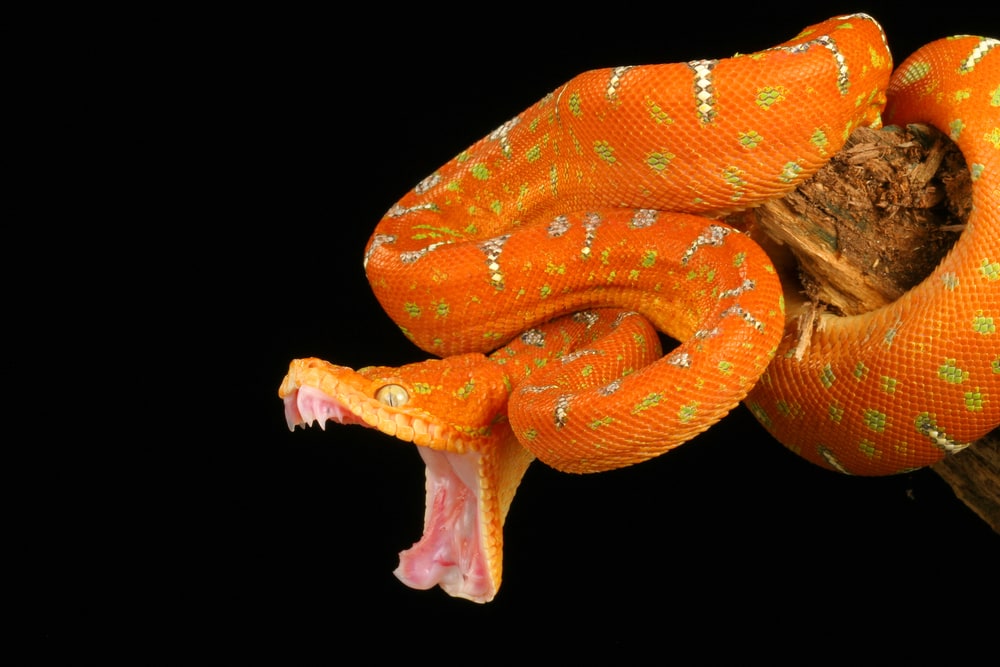
The exact size also varies based on the tooth’s position in the mouth. The teeth in the front tend to be larger than the teeth in the back.
Baby Ball Python Teeth
Of course, baby ball pythons have teeth too!
Their tooth size is relevant to their body size.
Unlike mammals, baby ball pythons don’t have “baby teeth.” Instead, they rely on natural tooth loss to replace small teeth with larger teeth as their body grows.
The youngest hatchlings may have such small teeth that they can’t break your skin!
If you’re afraid of a ball python bite, it might be best to start by handling a hatchling with this fact in mind.
How Many Teeth Do Ball Pythons Have?
Shockingly, ball pythons have around 30 teeth.
Since they’re constantly shedding and regrowing their teeth, that number can vary from one time to the next.
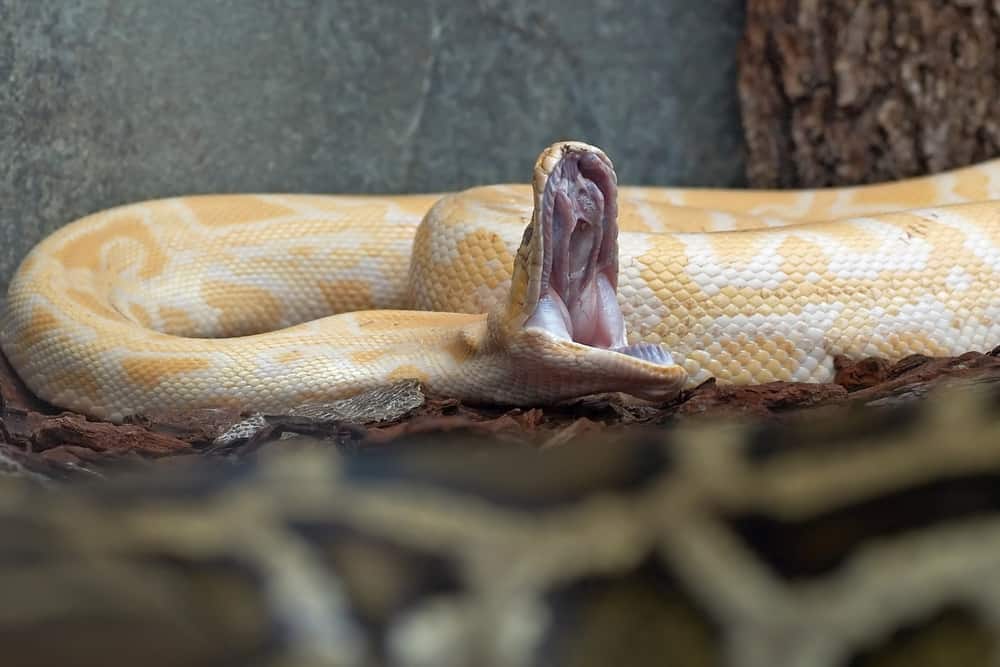
There are four rows of teeth on their top jaw and two rows in their lower jaw.
Will My Ball Python Bite?
The answer to this question isn’t quite black and white.
Can ball pythons bite you?
Yes.
Will a ball python bite you?
Maybe. In fact, it’s a BIG maybe.
Ball pythons became popular as pets because they’re generally docile and not defensive.
Most ball pythons would rather flee from a scary situation or curl into a ball than land a bite.
There are two types of bites from snakes: a defensive bite and a feeding response bite.
Ball pythons are one of the species that are least likely to bite you defensively.
Snakes bite defensively when they feel cornered or, in the case of some species, they’re guarding their nest.
Defensive bites likely present as a quick strike and release. The snake may try to escape once you’re distracted by the bite or let go of it.
Ball pythons might bite you as part of a feeding response.
Still, this type of snake is less likely to have a feeding response bite than other species – due to their extremely picky appetite!
Feeding response bites are a little different – ball pythons latch on. The snake may even try to wrap around you and constrict you.
How to Prevent a Ball Python Bite
Preventing snake bites is a bit of fine art. You tend to become better as you gain experience and confidence in handling pet snakes.
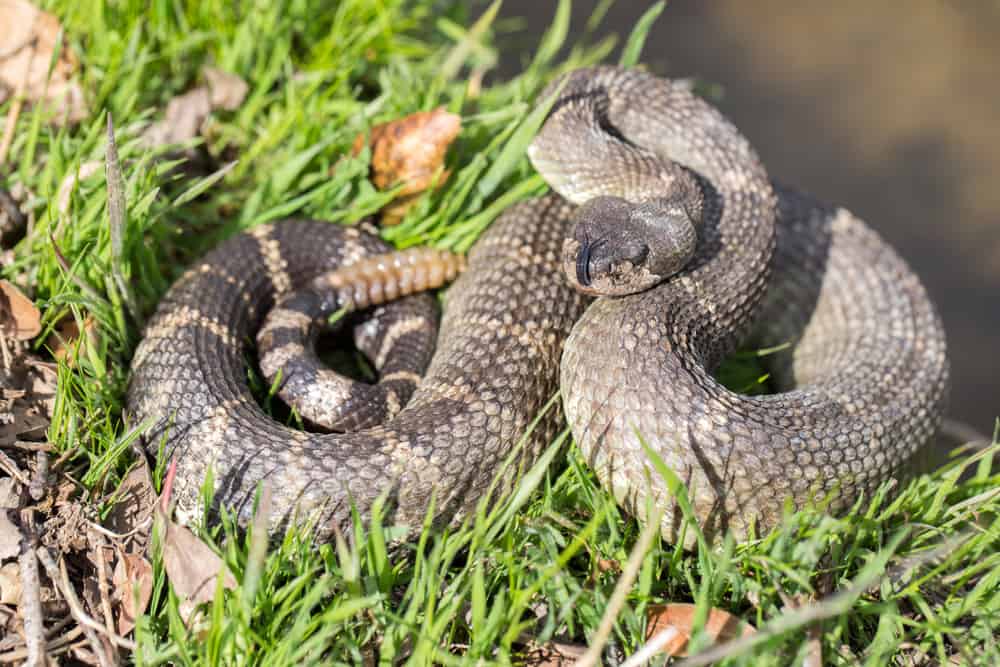
You can prevent a defensive snake bite by watching for warning signs, such as:
- Hissing
- “S” pose
- Jerky movements
- Open-mouth display
- Attempting to get away
In general, you can avoid defensive bites by handling your snake respectfully. Don’t grab or touch your snake’s head, and move slowly but with confidence.
Either way, just like other animals, sometimes snakes have aches, annoyances, or just generally bad days where they feel moodier.
Get to know your pet and pay attention to his cues. If he’s having a bad day, don’t handle him.
Here’s how to prevent ball python bites that are caused by a feeding response:
- Tap-train your ball python
- Move slowly but confidently
- Avoid handling your snake for 24-48 hours after it eats
- If you feed your snake on a schedule, avoid handling it on feeding day
- Wash your hands thoroughly before (and after) interacting with your ball python
With time, you’ll learn signals that your pet snake is in “hunting mode” – such as jerky movements that follow your every move or rapid tongue-flicking.
In those moments, your job is to break or interrupt their thought pattern. That’s where tap training comes in.
Snakes are smarter than most people give them credit for. Snake keepers adamantly confirm that tap training works.
Tap training involves LIGHTLY tapping your snake’s body with a stick or a snake hook before you reach into its enclosure.
You should ONLY do this when you’re not going to feed your snake.
What to Do If a Ball Python Bites You
If a ball python bites you, do NOT panic.
Some say that animals can sense your emotions. Try to remain calm and collected.
Do NOT pull your hand back. This will only result in their teeth tearing and slicing your skin instead of simple pin-prick-sized punctures. Which would you prefer?
Do NOT attempt to pull the ball python’s head off with your hands.
If you do either of those things, there’s a big chance you’ll end up with teeth embedded in your skin and potentially even injure your pet.
The first step to do is wait. If it were a defensive ball python bite, the snake would let go right away. If it were a feeding response, he wouldn’t let go, and he’ll wrap you up.
In this case, attempt to run the ball python’s head under cool water. That should convince it to release its bite.
If not, attempt spraying or dripping a TINY amount of vinegar or rubbing alcohol on its gums. Keep in mind that this may make your ball python sick. This is the last resort technique.
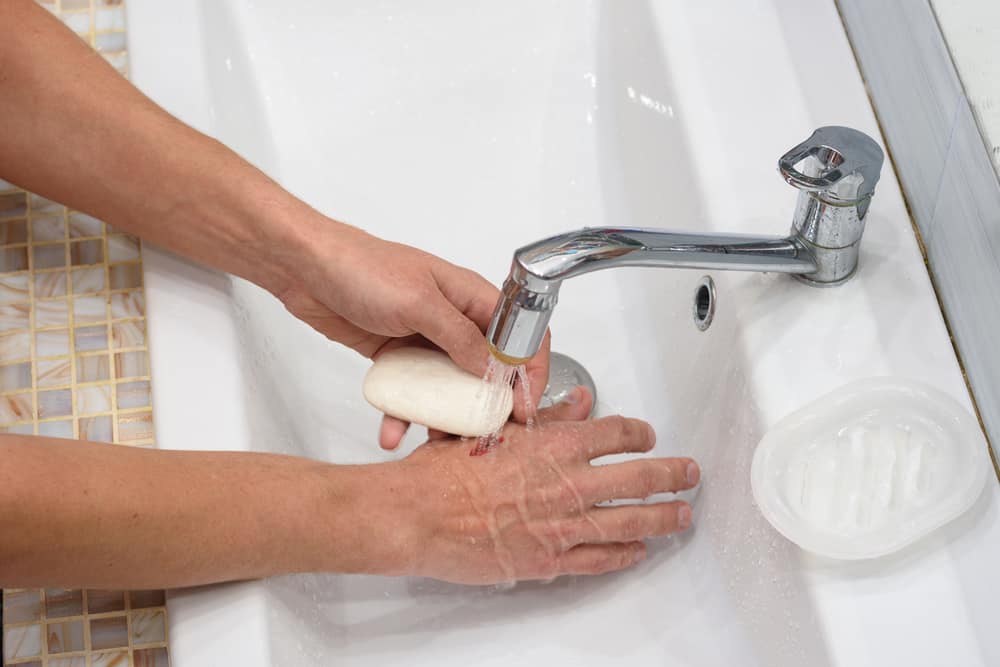
After you’ve gotten the ball python bite situation under control, be sure to clean the area thoroughly with soap and warm water. Watch for signs of infection, such as:
- Warmth
- Redness
- Itchiness
- Inflammation
Ball python bites rarely become infected, but it’s something to watch out for – as with any puncture wound.
Ball Python Tooth and Oral Health
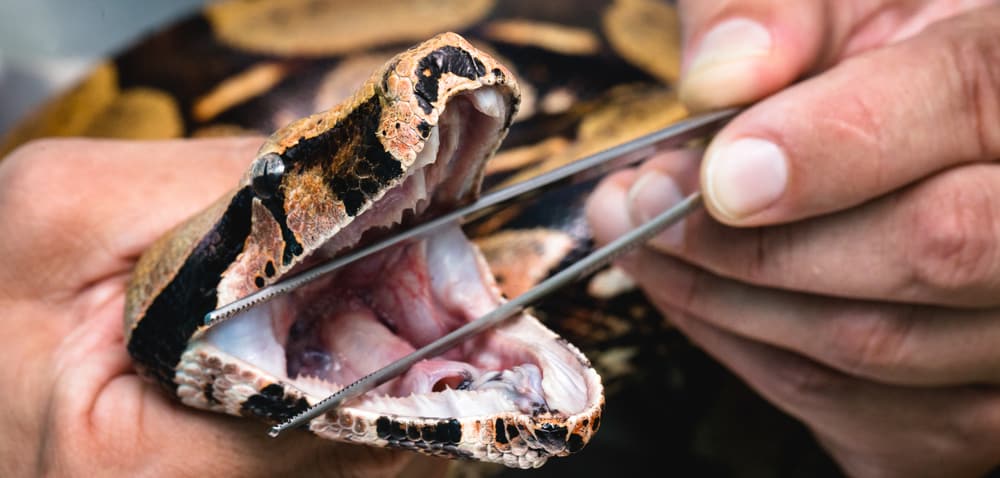
While you don’t need to brush your pet snake’s teeth, it’s still important to take note of – and watch for – potential oral health issues.
Check over your ball python regularly for these oral diseases.
If you suspect any of these issues, be sure to make an appointment with a qualified reptile veterinarian.
Broken Teeth
Sometimes, snakes get broken teeth from accidentally striking glass or other hard tank decorations. They can even get broken teeth from just eating their food!
In fact, usually, ball python owners don’t even notice when their pet has broken teeth. Eventually, the teeth fall out, and healthy teeth grow in place.
Sometimes, broken teeth may result in an abscess (see the section below).
If you notice that your ball python has a broken tooth with no signs of infection, be extra vigilant about keeping his habitat clean.
Consider removing unnecessary, hard decorations until the tooth falls out. This will prevent him from accidentally striking them (again).
Oral Abscess
An oral abscess usually stems from a broken tooth or an embedded piece of substrate. They’re not too common, but they do occur.
Mild cases are treated with injectable antibiotics. Severe cases may require surgery. Please make an appointment with your trusted reptile veterinarian to evaluate the situation.
Stomatitis (Mouth Rot)
Stomatitis means inflammation of the mouth. It’s a relatively common issue in the reptile-keeping world. Most snake keepers refer to it as “mouth rot.“
Prevent stomatitis by preventing mouth injuries in the first place. Stay on top of enclosure cleanliness, too. Bacteria cause infections, after all.
Symptoms of stomatitis include discoloration around the mouth, decreased appetite, and discharge from the mouth.
Mild cases of mouth rot could be treated at home with an OTC antiseptic, but things can quickly turn south for your pet snake.
If you suspect a case of stomatitis, we recommend taking your pet ball python to see a reptile veterinarian ASAP.
Ball Python Teeth Removal
No, you can not and should not have your ball python’s teeth removed. No ethical, licensed veterinarian would perform this procedure.
In fact, if a ball python’s teeth are removed, they will just grow back!
Even if a ball python bite hurts, this would be an unethical and uneducated practice. Luckily, they don’t really hurt more than a cat scratch!
On the more relevant side of things, you may be wondering about ball python tooth removal if their teeth become embedded in your skin after they bite you.
We strongly advise that you see your regular doctor if you believe this is the case.
Sometimes, snake teeth can be removed with tweezers – just like a splinter. Be sure to wash the area afterward. Applying a triple antibiotic ointment isn’t a bad idea, either!
Have you ever seen a snake’s teeth? Tell us what you thought about them in the comment section.
